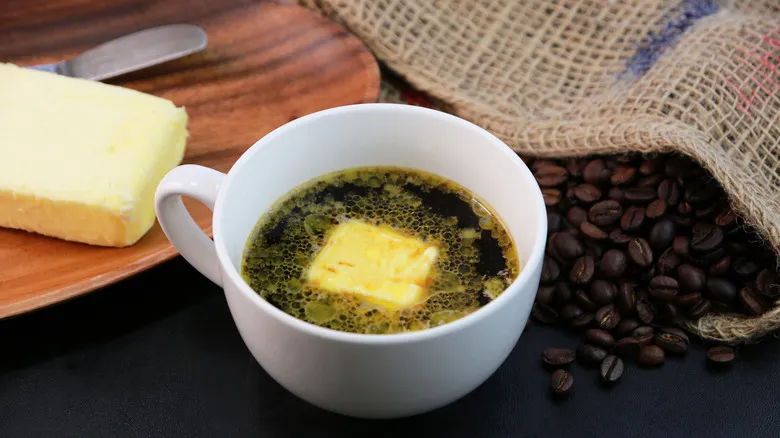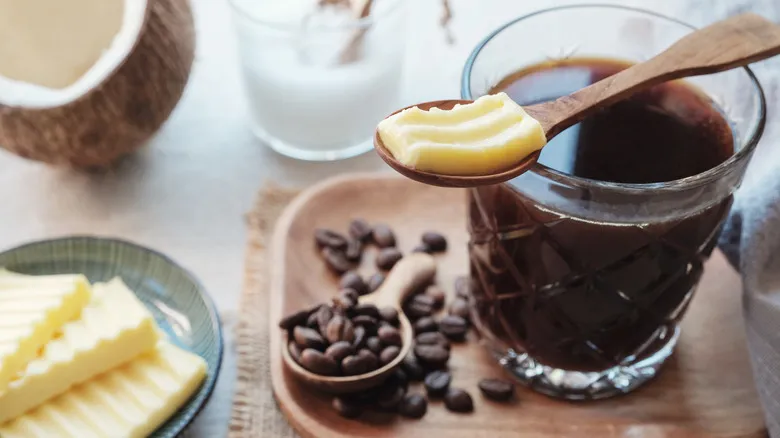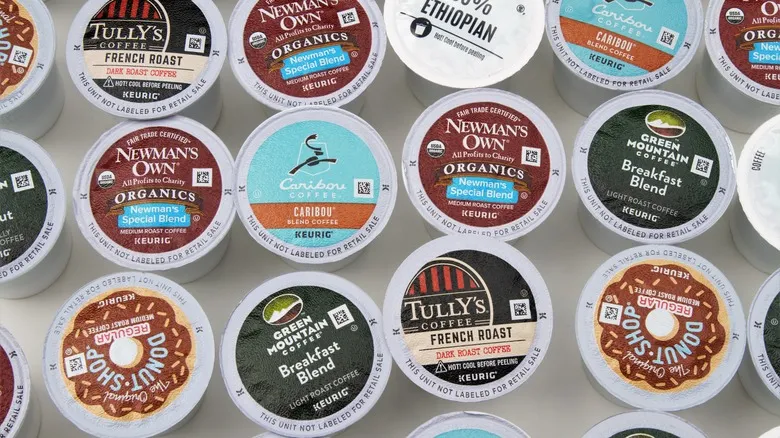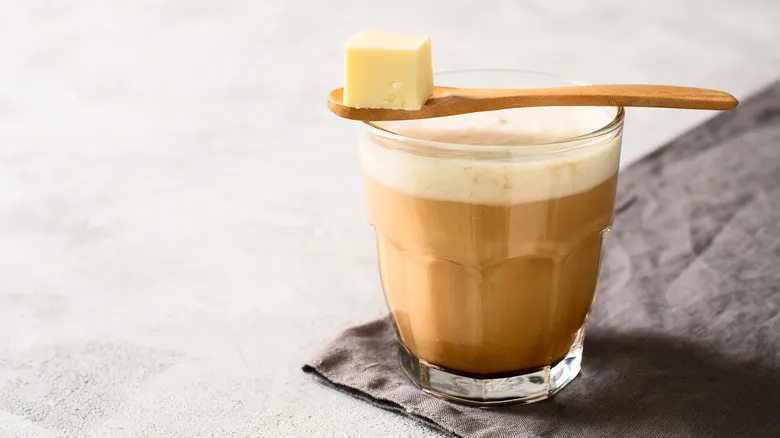The claims behind butter coffee

The advantages of butter coffee primarily arise from its two key components: butter and an oil rich in medium-chain triglycerides (MCTs). Typically, this oil is sourced from coconut oil in most recipes, although palm kernel oil can also be an alternative.
Butter contributes a significant amount of saturated fat to your drink, with natural butter containing about 80% of it. The concept is that this high-fat content slows the absorption of caffeine, helping you stay alert and energized for a longer period without experiencing the usual coffee crash. Furthermore, MCTs are thought to promote a sense of fullness, which may help curb hunger throughout the day. This appetite-suppressing quality could support weight loss and enhance metabolic efficiency for individuals following a keto or paleo diet.
However, despite the enthusiastic endorsements from proponents, there is a lack of scientific evidence to substantiate these claims. Research supporting these assertions is minimal, if it exists at all. According to Healthline, while butter may slightly slow caffeine absorption, the effect is likely negligible. Likewise, the role of MCTs in weight loss remains a topic of debate and is still inconclusive in the field of nutrition, as noted in a study published in the National Library of Medicine.
On the bright side, butter coffee is super delicious

Regardless of the actual facts, there’s one consensus among most people — including scientists: butter coffee can be quite delicious! Dave Asprey, who was inspired to create butter coffee after sampling yak-butter tea in Tibet, played a pivotal role in popularizing this trend. His brand, Bulletproof Coffee, features a unique blend of coffee combined with MCT-rich ingredients and grass-fed butter.
However, you don’t have to limit yourself to purchasing Bulletproof; making your own at home is just as effective. Begin with your preferred coffee type: whether it’s ristretto espresso, cold brew, or instant — choose what you enjoy. Next, incorporate about a tablespoon each of coconut oil and unsalted butter. If you want to minimize lactose, you can convert the butter into ghee. For those who are entirely lactose intolerant, consider using dairy-free alternatives like coconut butter, which complements the coconut oil beautifully.
Blend all the ingredients in a blender for around 30 seconds until you achieve a frothy, light-colored drink. Pour it into a glass and take a sip. While it may not serve as a substitute for your breakfast or offer miraculous health benefits, this buttery coffee will certainly provide a unique caffeinated experience.
Recommended

Why You Should Use 2 Coffee Pods For Every Keurig Brew

The Fascinating Mythos Behind The First Cup Of Coffee

The One Thing You're Getting Wrong When Making Cold Brew

The Olive Oil Brand Behind Starbucks' Oleato Coffee
Next up

